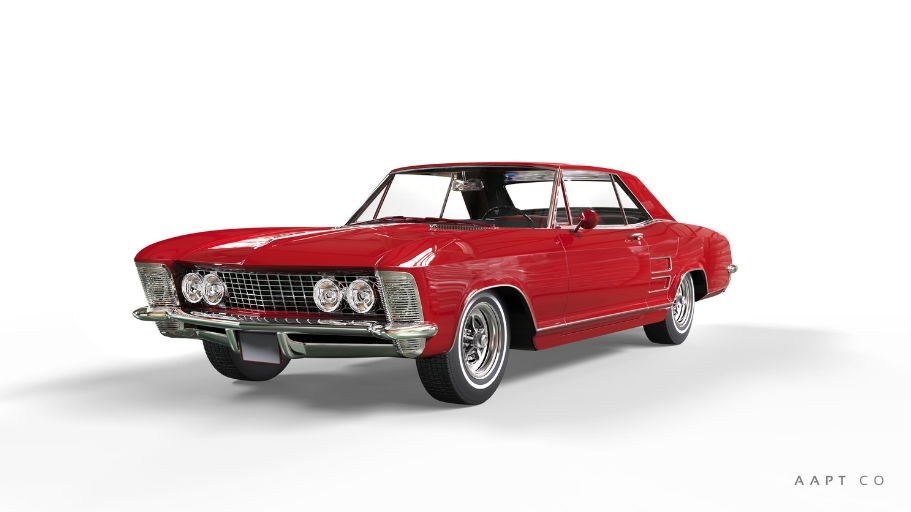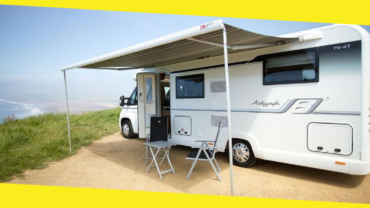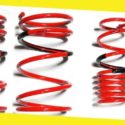What Is Considered Good Condition in a Classic Car?
This post was last updated on January 16th, 2024

Classic cars can be a lot of fun to drive and are generally considered to be very attractive investments, especially from classic car auctions. They can also be a rewarding project for those who know how to work on them or are willing to learn.
Many insurers set guidelines on what is considered to be a classic car and may require that you get special insurance instead of regular auto coverage.
Here are some of the key considerations:
Contents
Toggle1. Exterior
Classic cars are a source of pride for many owners. They can also be a valuable investment, increasing in value over time if properly maintained. Many insurers set specific guidelines for what they consider to be a classic car, including an age limit, the condition of the vehicle, and whether it has been modified or altered from its original design. These factors can influence the premium you will pay for a classic auto insurance policy.
A car that is considered in good condition by most classic car enthusiasts is one that has been restored to be as close to its original form as possible and looks almost like it did when it rolled off the factory floor. A classic car should also have no rust, have a good paint job, and have a working engine. Modern touches, such as an MP3 player or a built-in GPS navigator, are not acceptable for classic cars.
The most important factor for determining a classic car’s condition is how close it is to its original appearance. However, even the most beautiful and well-restored classic car can be considered in poor condition if it has excessive rust or damage, such as a cracked windshield or bumper. A ding or scratch on a fender is not necessarily a deal breaker, but it should be repaired as soon as possible to maintain the integrity of the vehicle.
Another factor that determines a classic car’s condition is how functional it is. In addition to ensuring the mechanical parts are in good shape, classic cars should have working interiors, such as a functioning air conditioning system and power windows. It is also a good idea to check for leaks in the radiator, water pump, fuel tank, and transmission. Any leaks should be fixed immediately. Since classic cars require specialized care, it’s best to take them to an experienced mechanic who specializes in working on vintage vehicles.
2. Interior
For a classic car to be in good condition, it should match the original design and specifications and be kept in that state as much as possible. That means that modern touches like MP3 players and GPS navigation systems won’t qualify. And it also means that the engine must be running, the tires matched, and all of the parts are there.
It’s important to remember that safety features aren’t standard in classic cars – in fact, most of them weren’t invented until the 1990s. That doesn’t mean that you can’t drive them, but you should take extra care to prevent any accidents or other damage if you do.
The interior of a classic car should be clean and free of any major defects. That means that there should be no rips in the upholstery or headliner, and all of the knobs, buttons, switches, and other components should work as they are supposed to. The paint should be in good condition, too – any major scratches or chips aren’t ideal, but minor blemishes are acceptable as long as they don’t affect the color or clarity of the vehicle’s finish.
Finally, a classic car should have its original drivetrain (engine, transmission, and rear axle). This is a major factor in determining its value since replacing these parts will typically make it less desirable to collectors. That being said, if these components are replaced, they should be done by a professional auto shop that specializes in working with classic cars – it’s best to avoid generic replacement parts unless absolutely necessary. This is particularly important when it comes to the engine, as generic parts can be made from inferior materials that could lead to costly damage in the long run.
3. Engine
The engine is another crucial aspect of a classic car’s condition. It should run and be mechanically sound with no visible signs of damage or rust. It should also be original in all aspects. A classic car in good condition will have an operating horn, power windows and doors, heat, air conditioning, and radio. A few minor issues are acceptable, but they should not be extensive.
The interior should be free of rips in the upholstery or carpeting and have no loose or frayed pieces. The gauges should be clear and easily readable, and the door handles, switches, and buttons should work. All components should be functioning, including the turn signals, headlights, and fan. A car in excellent condition may have a few minor cosmetic flaws, but it should be close to factory paint. Scratches and chips are not uncommon, but a large amount of damage, faded spots, or heavy oxidation can diminish its value.
A car in exceptional condition has a near-flawless restoration or is a very old original that has been well maintained over time. This is the top rating in a Concours event.
A classic car in very poor condition can be repaired, but it will never be worth as much as one that meets the higher condition ratings. The key is to determine your priorities and the pros and cons of investing in a classic car. For example, the pros of owning a classic car can include a fun hobby, a chance to connect with history, and an opportunity to make a profit. The cons of owning a classic car can include the cost of maintenance and repairs and the difficulty in finding parts for older models. In addition, it is important to understand that classic cars have different insurance needs than standard auto policies.
4. Drivetrain
While a classic car’s overall condition is important, the mechanical aspects of the drivetrain also factor in. It’s especially critical that the engine, transmission, and rear end remain original. If they are replaced, the parts should be genuine OEM replacements or factory-matched components that are the same as those used on the vehicle when it was originally assembled. It’s generally not considered good condition if any of these major components are rebuilt or modified in any way.
To achieve an excellent rating, a classic vehicle must be a near-flawless example of previously professional restoration. It should have been kept in a climate-controlled environment and well cared for since that restoration. The paint must be pristine and free of filler or rust, and all the chrome trim should be in good shape with no pitting. It should have been stored in a covered garage and driven sparingly to minimize wear and tear.
A good-condition classic vehicle is drivable but may need minor cosmetic or mechanical work. It should have a few flaws that only come to light with close inspection. This can include some minor paint blemishes, slight chrome misalignment, and road dirt.
The good-condition classic car has a solid and dependable engine, transmission, and rear end. It should have all of its factory-equipped options working, including air conditioning and power assists. These options can make a huge difference in the value of a classic car, especially if they are rare or expensive.
The bad news is that because classic cars are older and not as reliable as modern vehicles, they’re not nearly as convenient to operate. For instance, many classic cars don’t have navigation systems or Bluetooth hook-ups. Additionally, they produce higher emissions and aren’t as environmentally friendly as newer models. Maintaining a classic car can be costly and requires a lot of time and resources. Fortunately, a classic car that’s only driven occasionally can be much less expensive to maintain than one that’s driven daily.
5. Electrical System
Classic cars tend to appreciate in value rather than depreciate, and insurers often take this into consideration when calculating quotes. This means that if you limit mileage and use your car for pleasure only, it could even become more valuable in the future.
However, it’s important to remember that old cars need regular maintenance and repair work. This can be expensive, and it may not always be easy to find parts for older models. Also, classics generally don’t have the latest convenience features, such as Bluetooth hook-ups and entertainment systems.
Some people wonder what the difference is between a classic, vintage, and antique vehicle, as different clubs, collectors, and countries have their own criteria for when a car becomes a classic. However, most experts agree that the main determining factors are age, condition, and uniqueness, among other cars. You can tell if your classic is in good condition by testing the horn, lights, turn signals, and radio for functioning properly and looking for any frayed or exposed wires. Additionally, you should look for any leaks that can be costly to fix, such as those from the head gasket, radiator, power steering system, and hoses.
Recommended For You
The Ultimate Guide to Buying the Right Motorhome for Your Trip
Most Inside
Most Inside offers high-quality recommendations and valuable updates to enhance all aspects of your life, providing premium guidance and enriching experiences.




